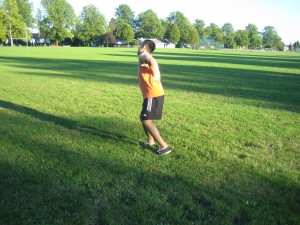Bursitis is inflammation of the small sacs of fluid or bursa that function in cushioning and lubricating the areas between the tendons and the bones. The trochanteric bursa is a large sac that separates the greater trochanter of the hip and the muscles and tendons found in the thighs and buttocks.
Bursitis affects the bursa found around the hip and trochanteric bursitis is the most common in which middle-aged or elderly women are more prone to this condition. Trochanteric bursitis is caused by severe injury, prolonged pressure on a bursa or performing activities that requires repeated twisting or turning or rapid movement of the joints such as jogging or cycling long distances. These activities can result to inflammation or irritation within the bursa. Conditions such as gout can put an individual at high risk for developing bursitis.
Symptoms
- Pain while lying down on the affected area
- Pain in the buttocks
- Pain felt in the hip or outside of the upper thigh
- Pain when applying force to the affected area and pain that occurs when climbing stairs
- Pain while getting up from a chair from a sitting position
- Pain while performing exercises and incapable of walking properly
Causes

- Performing strenuous activities such as excessive running, climbing stairs rigorously and standing for long periods of time in one position.
- Getting hit on the hip, lying down on one hip on the same position for long periods of time and bumping the hip to a hard surface.
- Infections such as tuberculosis can cause trochanteric bursitis and those who have conditions such as arthritis, gout or thyroid issues
- Uneven length of the legs
- Being overweight or obese
Treatment
- Apply an ice pack on the affected area at frequent intervals in order to help lessen the pain.
- Take pain and anti-inflammatory medications to help lessen the pain and swelling
- Try to lose some weight in order to lessen the pressure on the hip.
- Avoid prolonged standing and performing activities that causes pain on the affected area.
- Use a cane or crutches in order to lessen the pressure placed on the hip.
- Use a lift for the shoe to reduce the pressure placed on the hip if the other leg is shorter than the other.
- Perform stretching exercises in order to strengthen the muscles of the hip and the lower back.
- If pain is severe and persistent along with warmth and redness in the affected area, it indicates an infection that requires immediate medical care
Tips
Wear proper fitting shoes with adequate support. Those who have flat feet must wear proper orthotic inserts for the shoe and replacing them as often as possible. Strength in the core and legs is important for good posture. It is vital to engage in physical training to minimize trochanteric bursitis as well as avoiding those that can damage the hip.
